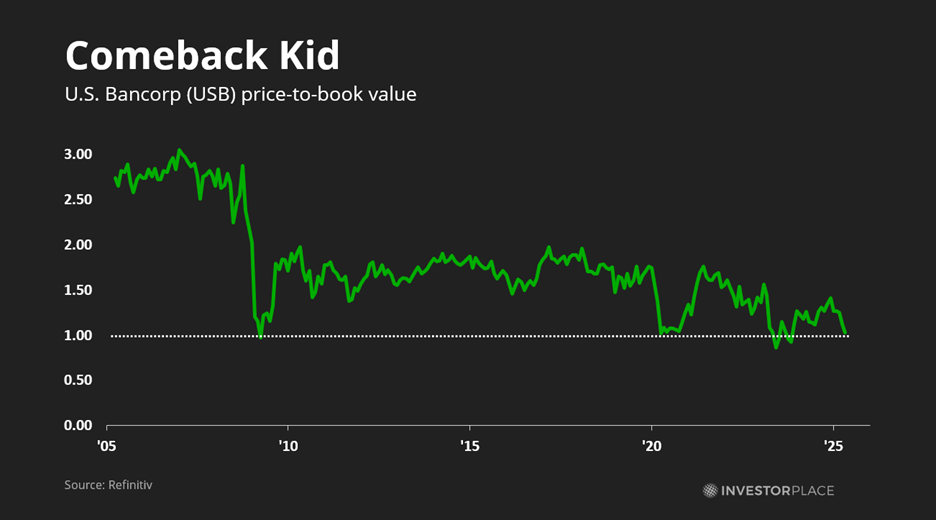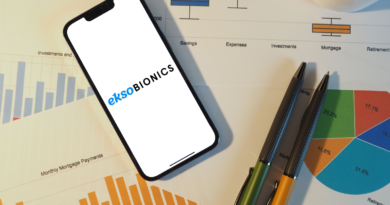3 Stocks to Buy Before the May 7 Catalyst
$7 trillion in sideline cash could soon flood the market…
Tom Yeung here with your Sunday Digest.
In the 1990s, my father moved our family to a new overseas “Florida-style” housing development. The land was cheap… the house was reasonably priced… and we needed the space.
At first, he wasn’t sure he had made the right decision. Our home was far from the city and stood in a former swamp. He watched nervously as home prices stayed stagnant like the water in our backyard.
But then came the catalyst: The local government replaced the four-lane road outside our development with a mega-highway.
After that, everything changed at once. Waterways were rerouted to drain the neighborhood, shopping malls were built nearby, and more houses quickly appeared. Suddenly, our home was worth multiples of what my father had originally paid.
These sorts of catalysts are often the most important thing in investing. Regional banks and biotechs can trade sideways for years… and then surge 100% on a takeover offer. Falling stocks tend to continue downward until a good news catalyst stems the tide.
Now, InvestorPlace Hypergrowth Specialist Luke Lango believes he’s identified a new catalyst that will change the entire market.
In fact, he’s so confident that a big event scheduled to take place May 7 is virtually guaranteed trigger huge moves in the market. While I can’t explain everything in this Digest, Luke is hosting his 2025 Summer Panic Summit on Thursday, May 1, at 7 p.m. Eastern to give you all the details and help you prepare. You can click here to reserve your spot now.
Of course, the fundamental value of a company remains the best gauge of a stock’s value. A catalyst alone isn’t enough to sustain a stock price.
But achieving that value often takes a push in the right direction. So, let’s consider three more companies that I recommend buying the dip on in anticipation of this game-changing May 7 catalyst.
Built for the Storm
In January, I wrote about CME Group Inc. (CME), a financial exchange that historically performs best during rising markets and periods of volatility. The Chicago-based exchange has exclusive licenses to issue futures contracts on the S&P 500, Russell 2000, and Nasdaq indexes, and more than 95% of all U.S. interest-rate futures trade on CME’s exchange.
Professional traders essentially must use CME’s products to help reduce risk (or profit from it).
As expected, the past several months have proven a windfall for the exchange. On April 23, CME Group reported that revenues had risen 10% to $1.6 billion, and earnings per share (EPS) were up 12% to $2.80. Shares have climbed 12% since that recommendation, compared to a 10% decline in the S&P 500.
CME should see another price jump over the next 30 days, especially given the muted price reaction to first-quarter earnings. Volatility is spiking, and the uncertainty sparked by President Donald Trump’s “Liberation Day” tariffs has sent trading volumes on the CME exchange to near-record highs. Daily traded volumes for April currently average 40 million contracts, compared to 29.8 million in the first quarter and 7.8 million in 2024.
That should help CME do well. President Trump has yet to finalize any trade deals with the 75 countries he’s pledged to do with, so don’t count on volatility suddenly going away.
The Taxman Comes
We knew going into 2025 that taxes would be a hot topic. President Trump’s 2017 Tax Cuts and Jobs Act (TCJA) expires this year, and Congress must propose a replacement. Here’s what I noted last December when naming Intuit Inc. (INTU) my No. 5 pick for 2025:
Tax changes for 2025 should reaccelerate growth. The incoming president has suggested he will implement sweeping overhauls, including tariffs, tax cuts on tips, and changes to how Social Security works.
This will create a bonanza for companies like Intuit, which saw a similar boost during Trump’s first presidency – with shares rising 38% in Trump’s first year in office alone. Some campaign promises – such as no taxes on tips – will spawn thousands of inventive ways to avoid taxes.
Shares of this blue-chip software firm have slipped just 4% since that recommendation, compared to a 13% retreat in the tech-heavy Nasdaq-100 index.
Now, I believe another breakout moment is coming for Intuit. Over the past 15 years, shares of the tax and accounting firm have risen 10% on average between May and July. (Markets seem consistently surprised that Intuit’s TurboTax software does so well in March and April.) In addition, the White House and Congress have recently begun talking about how to pay for an extension of the TCJA… and it’s going to be complicated.
That should cause Intuit’s shares to grind higher as the Trump administration floats new tax ideas. The stock trades at a reasonable 30X forward earnings – 15% below its five-year average of 35X – and significant changes to America’s tax code should provide a boost to demand.
A Conservative Play
Finally, several banks seem ripe for investment.
And the one that stands out most is U.S. Bancorp (USB).
USB is one of America’s best-run banks. The Minneapolis-based firm has high profits, excellent cost controls, and conservative underwriting. Net charge-offs peaked at just 2.5% of loans during the depths of the financial crisis – well below the 3%-plus rates of rival firms. Its cyclical midpoint return on equity (ROE) of 13% sits a third higher than the industry median.
This quality obviously comes with a price tag. Shares have traded at an average of 1.8X price-to-book value since 2005, and price-to-earnings ratios typically sit in the low teens.
However, recent fears of a U.S. recession have pushed shares to unusually low levels. As shown in the graph below, USB has only dipped below the 1.0X price-to-book mark three times in the past 20 years.
- 2008: The Global Financial Crisis
- 2020: The Covid-19 Pandemic
- 2023: The U.S. Regional Banking Crisis

That presents an opportunity. As Luke will explain in his presentation on Thursday, May 1, which you can register for now, he expects to see stocks like USB undergo a “V”-shaped recovery like we saw in 2009. That should send multiples of USB back into the 1.25X to 1.5X range, a 25% to 50% upside.
It’s important to note that the conservative nature of USB means its upside will be limited to 50%. It’s not a moonshot bet like Moderna Inc. (MRNA) or other firms I’ve recently talked about. But for conservative investors looking for some “singles” to complement home runs, it’s hard to beat the quality of U.S. Bancorp.
The Opportunity of a Generation
Stories like my father’s don’t come around very often. Housing prices usually rise in the low single-percentages… unless you managed to buy a New York City apartment in 1975 or Florida real estate in 1990.
The same is usually true for stocks. It’s not every day you see 2X… 5X… 10X returns.
But Luke Lango is seeing a new catalyst that could drive stocks higher… the sort of surge that we haven’t seen since the 1997 internet boom.
That’s because investors are currently sitting on a record $7 trillion in cash, waiting for the opportunity to jump in. Private equity alone is sitting on at least $2.62 trillion, according to S&P Global Market Intelligence.
That means we could see an enormous return of this cash to the stock market this summer.
Which is why this coming Thursday, May 1, at 7 p.m. Eastern, Luke is hosting an urgent strategy online session. During the event he’ll show us how we can not only protect our portfolios this summer… but also see triple-digit gains in the coming years.
Plus, he plans to detail seven new opportunities at the center of this historic summer panic.
Click here to save your seat for Luke’s The 2025 Summer Panic Summit.
Until next week,
Tom Yeung
Market Analyst, InvestorPlace.com





